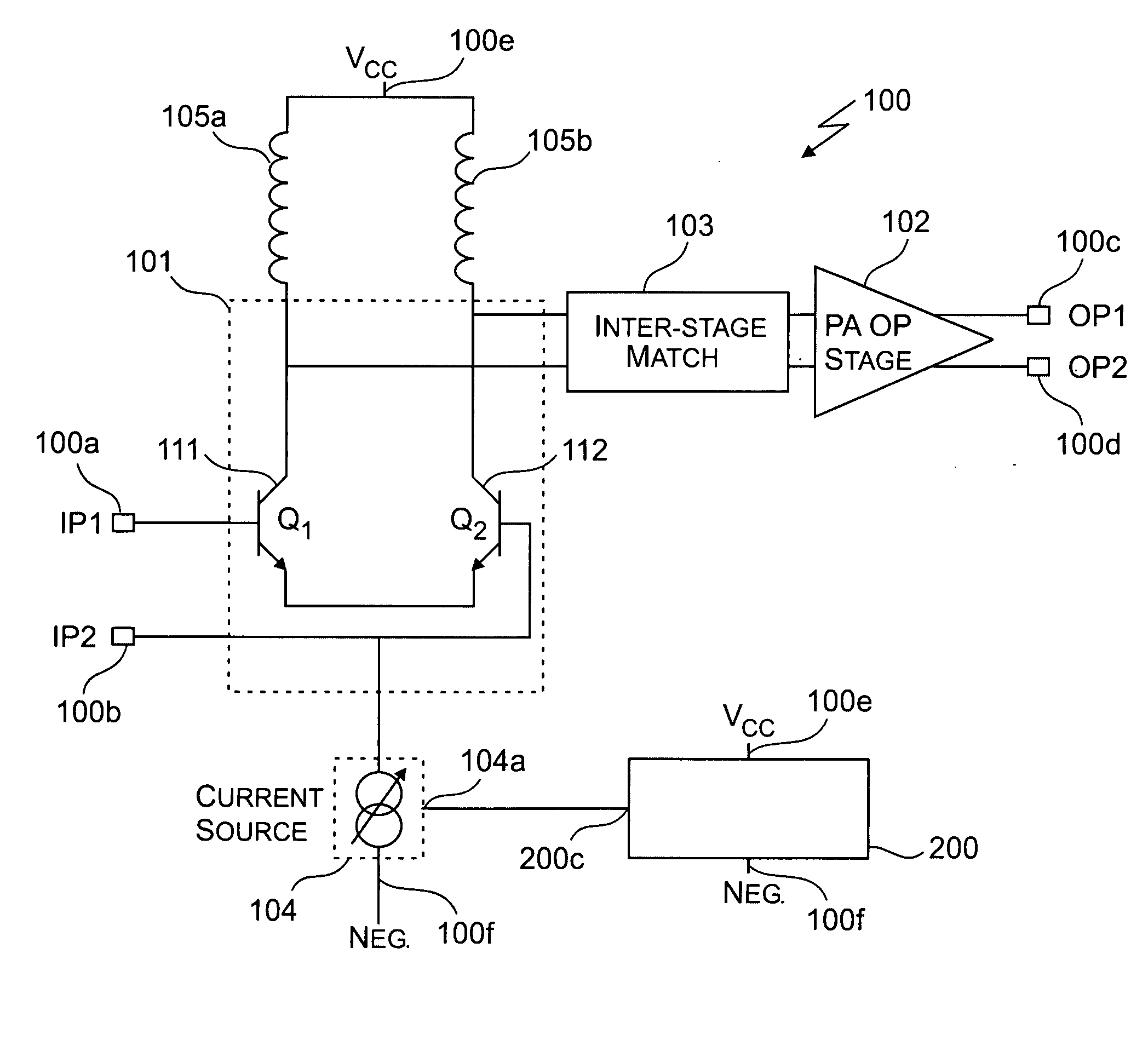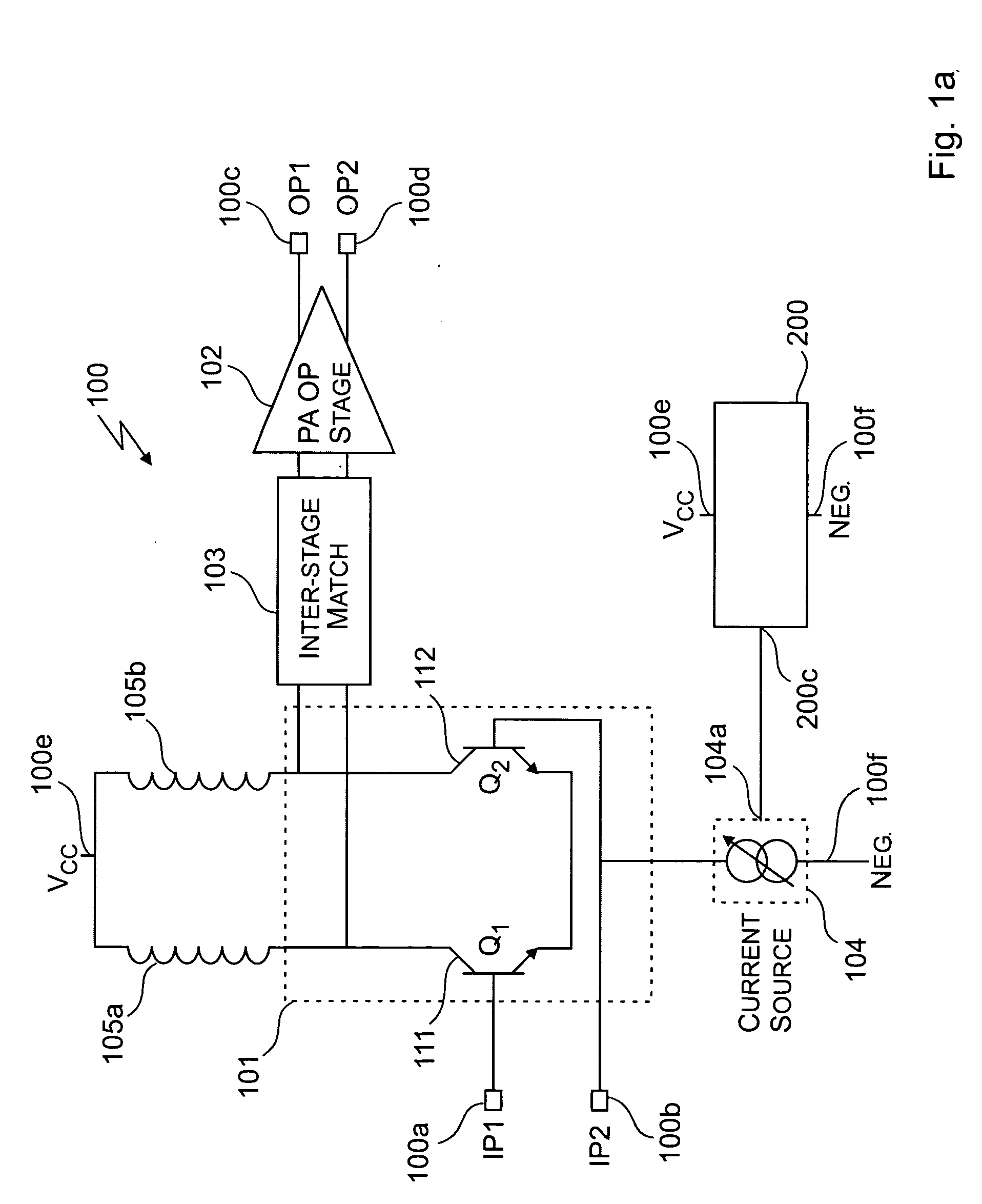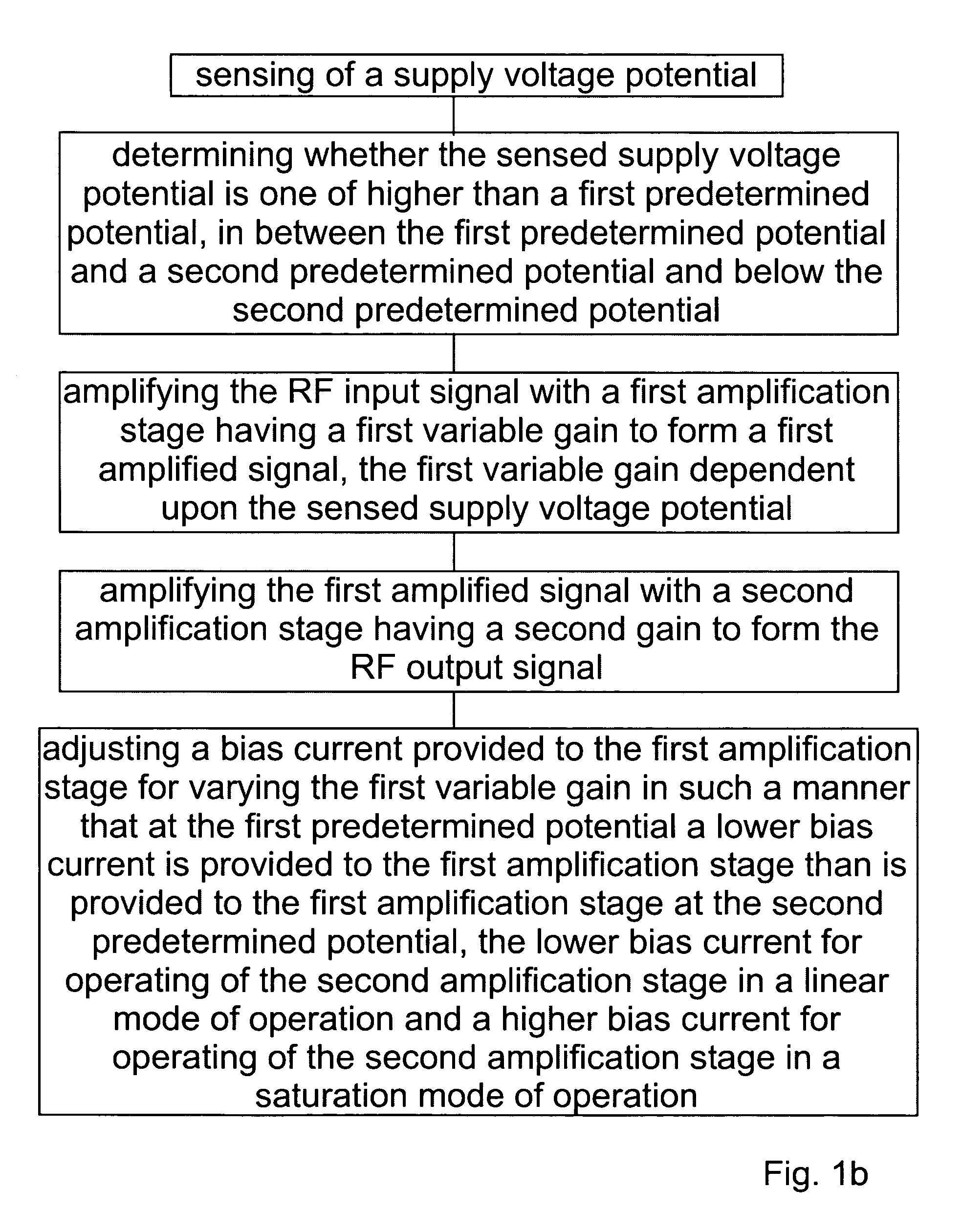Power level controlling of first amplification stage for an integrated RF power amplifier
a technology of power amplifier and power amplifier, which is applied in the direction of amplifiers, dc-amplifiers with dc-coupled stages, high-frequency amplifiers, etc., can solve the problems of difficult to predict the amplitude of the output signal with any great accuracy, and the inability to provide the overall pa output signal amplitude with accuracy
- Summary
- Abstract
- Description
- Claims
- Application Information
AI Technical Summary
Problems solved by technology
Method used
Image
Examples
second embodiment
[0020] The primary focus of the embodiments of the invention is the control circuit 200 (FIG. 2a) and control circuit 220 (FIG. 2b) and their use in controlling of the controllable current source 104. FIG. 2a illustrates the control circuit 200 in accordance with the invention. The control circuit 200 is comprised of the following circuit blocks: a supply voltage sense circuit 201, a first multiplier circuit 202, a bandgap reference circuit 203, and a current summing circuit 204.
[0021] The supply voltage sense circuit 201 has a first input port connected to the first supply voltage input port 100e for sensing a potential of the first supply voltage (Vcc) applied thereto relative to a reference voltage from a reference source (not shown) provided to a second input port thereof. An output port of the supply voltage sense circuit 201 is used for providing a sense signal (Isense) (302FIG. 3a) to a first input port of a first multiplier circuit (M1) 202. Preferably M1202 is in the form o...
third embodiment
[0028]FIG. 2b illustrates the control circuit 220 in accordance with the invention. The control circuit 220 includes the circuitry of control circuit 200, but further comprises a second multiplier circuit 205, a charge pump and ramp control circuit 206 and an integrating capacitor 207. The second multiplier circuit 205 has a first input port, a second input port and an output port. Preferably the second multiplier circuit 205 is an analog multiplier circuit, preferably in the form of a Gilbert gain cell. The summed current provided from the output port of the current summing circuit 204 is provided to the first input port of the second multiplier circuit 205. The output port of M2 is directly connected to the output port 200c of the control circuit. An output signal from the second multiplier circuit 205 serves as the control signal (Icontrol) that is provided to the control port 104a of the controllable current source 104 used for biasing of transistors Q1111 and Q2112 (FIG. 1). Th...
PUM
 Login to View More
Login to View More Abstract
Description
Claims
Application Information
 Login to View More
Login to View More - R&D
- Intellectual Property
- Life Sciences
- Materials
- Tech Scout
- Unparalleled Data Quality
- Higher Quality Content
- 60% Fewer Hallucinations
Browse by: Latest US Patents, China's latest patents, Technical Efficacy Thesaurus, Application Domain, Technology Topic, Popular Technical Reports.
© 2025 PatSnap. All rights reserved.Legal|Privacy policy|Modern Slavery Act Transparency Statement|Sitemap|About US| Contact US: help@patsnap.com



